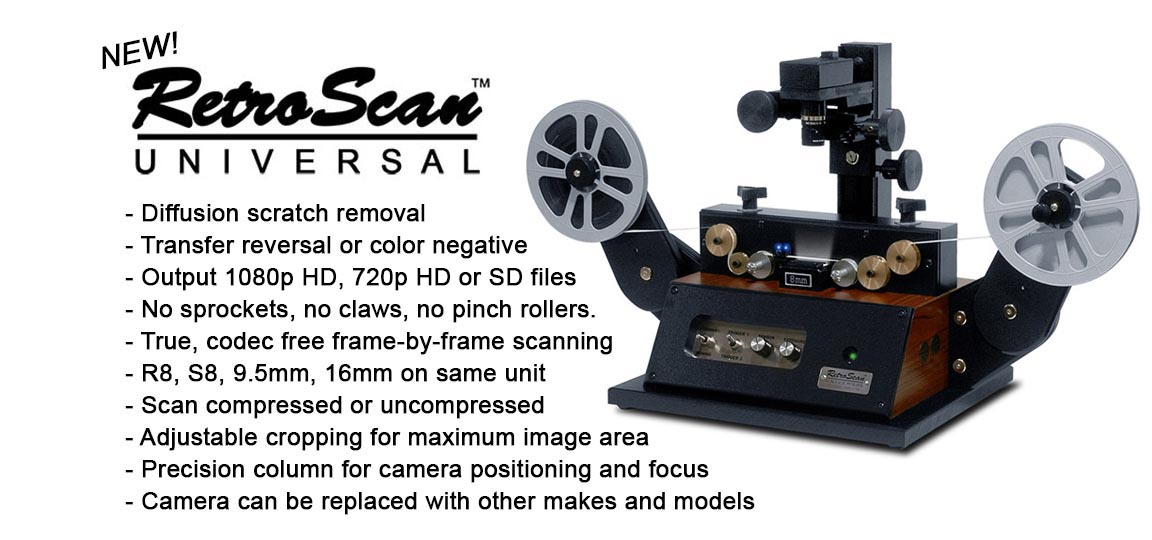Will2 wrote: Thu Apr 13, 2017 4:53 pm
MovieStuff wrote: Thu Apr 13, 2017 3:27 am
On a related topic, we hope to have a 2K upgrade kit available by the summer. It is a separate kit that the user installs easily without having to send the whole unit back and will work with the Universal software, which is currently undergoing a complete revision.
Will that be a full 2k 2048x1440ish? or more widescreen? I really like having the full height so we can finish in HD and just crop top and bottom rather than having to scale it...
Here's the lowdown on the upcoming 2k kit:
Based on the excellent, low noise, great color of the new Sony IMX chip, which is a first generation CMOS chip with a global shutter, the full 2k resolution will be 2048 x 1536. The new software will allow you to scan compressed or uncompressed at 2048 x 1536, 1920 x 1080 or the original 1296 x 964.
The inclusion of scanning at 1296 x 964 may seem odd but the reasoning is logical when you consider that the majority of small mom and pop shops in our target market that we sell units to are still only outputting standard def DVDs. So 1296 x 964 is already higher resolution than most everyone is currently demanding. Remember, we don't capture to a compressed video file. The Universal captures each frame of film to a Photoshop quality digital still frame. So there's a bit more overhead per frame than capturing to a video file. Based on extensive tests, capturing with the Universal at 1920 x 1080 can put some laptop based systems at the very edge of acceptable performance due the prevalence of 5400 RPM drives. Also, the aspect ratio of the target material is essentially always 4:3, so forcing adopters of the 2k camera to capture at a minimum resolution of 1920 x 1080 does nothing to noticeably increase picture quality but does increase the amount of data per frame by by well over 50%, which is silly when 99% of the time, you're going to do a 4:3 center cut for SD or cover the left and right areas of the 1920 x 1080 HD frame with black pillar bars. So allowing capture at 1296 x 964 allows previous Universal users to make a lateral move to the superior picture of the new camera without having to make sudden upgrades to their computer hardware. They can test and see if their system can handle 1920 x 1080 at full 15fps. If so, then great. If not, they can capture at 1296 x 964 at 15fps but simply switch the Universal to 10fps to capture 1920 x 1080 for customers that require it.
Regarding 2k, Jeff has made some terrific improvements to the I/O of the software, which significantly improves performance. Because the 2k files are so large per frame, we are finding that, on some systems, you can actually capture uncompressed easier than compressed. This is because there is a "tipping point" where the amount of time it takes some systems to compress and write a frame to a single drive can exceed the time it takes to just write an uncompressed frame without the delay of compression time. This is actually huge because it means on most non-raid desk top systems, you can enjoy the space saving economy of capturing 1920 x 1080 compressed for the majority of customers but still be able to capture full, uncompressed 2k on the same drive for customers that demand it. This "tipping point" advantage also holds true on some laptops where the normal capture mode is 1296 x 964 but someone has a lot of footage they want captured at 1920 x 1080. In that instance, some laptops that might require 10fps for 1920 x 1080 compressed have no problem capturing uncompressed at 15fps. That said, what our testing has revealed is that the only way to be sure is by doing experiments. Each system limitation is different. What we will suggest for each customer that moves up to 2k is that they should consider installing a Raid-0 array for problem free performance in all modes. It's so easy to do now that you might as well, unless you plan to just continue operating at 1296 x 964 for capture.
In the future, it is unlikely we will ever offer anything beyond 2k. Never saying never but the reality for our current market is the target image being captured is almost always 4:3. If you capture your full 8mm or 16mm 4:3 frame at 2048 x 1536, the only way to preserve all the information in that frame and still output a 16:9 image at full vertical and horizontal resolution is to "float" the 2048 x 1536, 2k image in a 16:9 3k frame with black pillar bars on the sides. So the need to offer a 4K capture mode is really, really,
really the exception to the rule in what is already a very narrow niche market. Also, once you start getting above 2k, the caliber of lenses required to sustain the line pairs for a true 4K image becomes prohibitively expensive. So, for a while, we will be sticking with 2k.
Anyway, we will make announcements as we get closer. Cameras based on the new Sony IMX chip are currently on long lead times with all manufacturers. Sony is way behind on fulfilling orders and can't keep up with the demand. We are working with FLIR (formally Point Grey) on expediting our access to their new cameras so we hope to have the 2k kit available by the beginning of summer.
Roger
